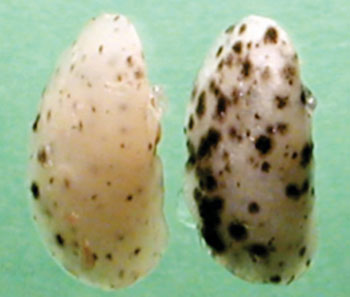Novel Molecular Pathway Controls Metastasis in Mouse Melanoma Model
By LabMedica International staff writers
Posted on 06 Jan 2015
Cancer researchers have found that the protein Chi3l1 (Chitinase 3-like-1) stimulates formation of metastases in a mouse model under the regulatory influence of the protein semaphorin 7a (Sema7a) and its receptors.Posted on 06 Jan 2015
The CHI3L1 gene encodes a glycoprotein member of the glycosyl hydrolase 18 family. The protein product lacks chitinase activity and is secreted by activated macrophages, chondrocytes, neutrophils, and synovial cells. The protein is thought to play a role in the process of inflammation and tissue remodeling. Semaphorins are a class of secreted and membrane proteins that act as axonal growth cone guidance molecules. They primarily act as short-range inhibitory signals and signal through multimeric receptor complexes with plexins being the major class of semaphorin receptor proteins.

Image: Dysregulation of the protein Chi3l1 allows melanoma (black specks) to spread to the lungs of mice. Chi3l1 was relatively unchecked in the lung on the right, compared to the lung on the left, which had much less spread of the cancer (Photo courtesy of Brown University).
Chi3l1 was found in earlier studies to be induced in cancers where it indicated a poor prognosis. However, it has not been known whether it actually contributed to cancer progression. To address this gap in knowledge investigators at Brown University (Providence, RI, USA) examined the production of Chi3l1 in a mouse model of melanoma lung metastases.
They reported in the December 15, 2014, online edition of the journal Cancer Research that Chi3l1 levels were elevated in mice, as in humans, with progressing cancer. Chi3l1 was induced during pulmonary melanoma metastasis, and this induction was regulated by Sema7a, interacting in stimulatory or inhibitory ways with its beta-1 integrin or Plexin C1 receptors, respectively. In mouse strains with genetic deletions of CHI3L1 or Sema7a, there was a significant reduction in pulmonary metastasis. Furthermore, antiserum raised against Chi3l1 or Sema7a induced the same reduction in metastasis as was produced by genetic deletions. Melanoma lung metastasis was also decreased in the absence of the cytokine IL-13Ralpha2, a recently identified receptor for Chi3l1, consistent with a key role for Chi3l1 in melanoma spread.
"We think everybody has Chitinase 3-like-1 (Chi3l1) in them because it plays a major role in our ability to fight off infections," said senior author Dr. Jack A. Elias, professor of medicine and biological sciences at Brown University. "But one of the things this paper shows is that inducing this molecule seems to be very important in the ability of tumors to spread. That leads us to believe this may be a fundamental pathway in the generation of metastases. We know what molecules are involved in the triggering of this. We do not know where they are and which of them are on the tumor and which are in the normal tissue around the tumor."
Related Links:
Brown University












